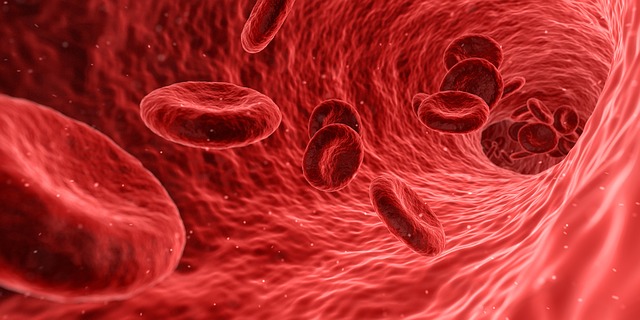Blog
Daily Habits That Contribute to Back Pain
Even seemingly innocuous activities contribute to back pain…
So much of life is blazed through in a haze of semi-consciousness; when you are sidelined by back pain, it is hard to scan through the past days, months and years to determine the cause of the pain. In all likelihood, the pain has emerged from a combination of malefactors which have culminated into a breaking point. If you are fortunate enough to be reading this from the vantage point of not having back pain, it is worth taking a look at our list of everyday habits that are hurting your spine to determine if you have room for improvement (we would wager that you do).
How a Stronger Core Improves your Life
Compelling reasons to improve your core health
As an office of chiropractic, we focus on the spine as a foundation for wellness. An auxiliary to the spine’s health is the core: the network of muscles that extend from the lower stomach to the upper back and are involved in every motion we perform on a daily basis. Developing the strength and stability of your core is a key way of supporting the spine. Here’s are some reasons to improve core strength:
- Protect the nervous system: the spine is a key conduit of the nervous system, connecting brain and body. A stronger core prevents the compression which weighs down on our spines and puts spinal nerves under pressure.
- Prevent injury: the core muscles facilitate and stabilize movement, ensuring that your spine does not suffer injury from excessive movement.
- Increase the longevity of your spine: the muscles of the core are your spine’s key ally in maintaining posture and strength. A lot of the weakness and degeneration inherent in our spines’ age can be mitigated by a stronger core.
- Make yourself more attractive: and while this may appeal to our inner vanity, a stronger core helps us maintain a more upright posture, which not only projects confidence but contributes to better spinal health.
How we help improve core strength and spinal health at Family Chiropractic & Natural Healing Center
At our office in Milpitas, we believe that knowledge is power! The first step toward a stronger core and a more stable spine is awareness! We can help you determine when the way you use your core is letting you down. From posture to exercise and diet, we are committed to helping you improve your core health across the board. Chiropractic modalities maintain spinal alignment, increase circulation and improve nerve function throughout the core. From here, we focus on elongating the deep-lying muscles of the core and strengthening the phasic muscles which lend strength and support to the lower back. If you are interested in improving your core health to benefit the spine, give our office in Milpitas a call to schedule an appointment today.
Preventive Healthcare: A Healthy Spine for a Longer Life
Your spine is the foundation of wellness
Keeping it healthy should be an essential health objective in our society. There is an accepted, albeit twisted, narrative that being old equates to having back pain, and little can be done about it. We’re here to tell you that this is not the case. Chiropractic is part of a preventive healthcare mindset that treats your spine as the basis for your physical wellbeing. Rather than the traditional reactive form of healthcare that predominates in Western medicine- the kind that treats symptoms after the fact- we focus on maintaining a high level of health for the spine to prevent problems from happening in the first place.
Chiropractic is conservative care
And conservative care is especially effective when you consider it from a preventive angle. Chiropractic’s primary health objectives in a preventive sense are: maintaining alignment of the spine, contributing to the health and pliability of the muscles and soft tissues that support it, and improving core stability. The overall outcome of these three factors is:
- More fluid nervous system function
- Better range of motion
- Less back pain
- Ability to maintain better posture
And once injury does strike, chiropractic seeks and addresses the root cause rather than treating symptoms. Our bodies are amazingly adept at healing themselves, but sometimes they need a helping hand. Chiropractic is a conservative form of rehabilitation that seeks to augment the body’s natural healing abilities.
Prevention is healthcare the right way around
At our office in Milpitas, we are concerned with helping you use spinal health to influence overall wellbeing. We would love to help you unlock the potential of your musculoskeletal being- if you are interested in improving spinal health to live a longer, less painful life, give our office in Milpitas a call to schedule an appointment today.
Getting to Know Your (Spinal) Curves
Spinal curvature is essential for stability and mobility
There are four essential curves in your spine: the cervical, thoracic, lumbar and sacral, and each has a vital role to play in spinal health and thus, in your overall well-being. However, the four of them combine to provide your entire body with stability and resilience to injury and pain, as well as providing for the initiation and stabilization of all the movements we perform throughout the day.
Decompression Therapy in the Bay Area
Getting older means taking a more proactive approach to spinal care
Whether you like it or not, once we approach the quarter-life mark, (20-25 years), our spines need help. Gone are the days of resilience where our backs could withstand seemingly any twist, turn, and dip. The reality is that spines begin to stiffen as the constant downward compression of gravity compounds and begins to wreak havoc. It is therefore our responsibility to protect the longevity of our spines by taking decisive action now! Fortunately, your spinal care specialists at Family Chiropractic & Natural Healing Center are well equipped to help you do just that.
Why Circulation Counts for Vitality
Why circulation is so important
When your blood is flowing optimally, all the cells in your body are getting the oxygen and nutrients (assuming you have been consuming them!) they need, while they are also able to get rid of the cell waste and toxins that cause cellular dysfunction. Your vital organs, including the brain, are literally fed by your blood. We can put no price on the importance of these inputs for the function of our bodies, allowing our cells to repair and regrow the way they need to keep us healthy and functioning optimally.
How your Cell Phone is Harming your Neck
Spinal pressure is exacerbated by cell phone use
The downward pressure of gravity is ever-present: statistics show that your lumbar intervertebral discs are under 100kg of pressure when you are standing with good posture; 125 when you are sitting with good posture. That is enough to overburden discs, especially when you are going around with an inferior set of supportive muscles. However, another way to overburden your spine is with poor posture, and cell phone use is conducive to poor posture:
- The average human head weighs 10-12 pounds
- Every inch you hold your head forward while looking at your cell phone magnifies the weight of your head by up to 10 times per inch.
Feeling Like a Million Bucks: Old Age Edition
Spinal longevity means a better old age
Our spine is the foundation of our well-being. When we are young, the majority of us are blessed to take it for granted, moving at will and maintaining a natural resilience to injury. But age is the natural enemy of our spine- the truth is, human lifespans are now longer than the sell-by dates of our spines. Here is why spines matter for old age:
- They keep us mobile: initiating and sustaining the forces incurred during movement begins with the spine.
- They support us: staying upright means staying healthy. A properly supported spine keeps us feeling our best.
- A healthy spine can prevent injury
- Provides a conduit for the nervous system
Ergonomic Injuries Are a Workplace Reality
When your ergonomics work against you…
There is such a thing as bad ergonomics, and let us assure you, it is far more common than good ergonomics! Ergonomics is actually an applied science- the science of human efficiency as determined by the design and arrangement of the surrounding environment. A typical ergonomic equation follows that a happier, healthier human is a more productive worker; and ergonomics is the cornerstone of this equation. However, far too many companies fail miserably when it comes to setting up their employees for ergonomic success. And far too many workers fail themselves by not taking the onus upon their shoulders to keep themselves healthy by optimizing their ergonomic situation.
Ergonomic risk factors include:
- Poorly adjusted work stations
- Consistently poor (or poorly supported) posture
- Exposure to repetitive motions which cause trauma
Spinal Elongation is Feel Good Therapy
Positions that put your spine under pressure
No surprises here; some of the most common positions we assume are the ones which put our spines under the most pressure. These positions include:
- Forward head posture
- Slouching
- Slumping
These are positions that contribute to the premature degradation of spines, and the age of onset for such degradation is shifting to an earlier demographic thanks to the use of mobile devices. Problems associated with these postures include:
- Narrowing of spinal discs
- Exaggerated curvature
- Increased compression of the spine
- Herniated discs
- Facet joint syndrome
As an office of chiropractic, our job is to reverse the harmful effects of this compression. One of our best modalities for doing this is spinal elongation.









